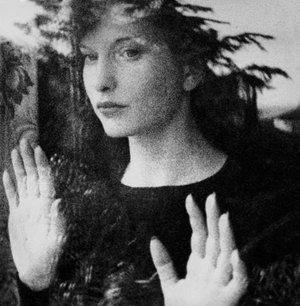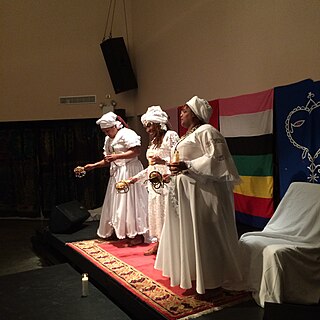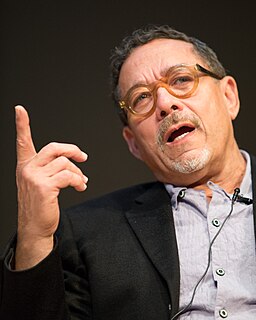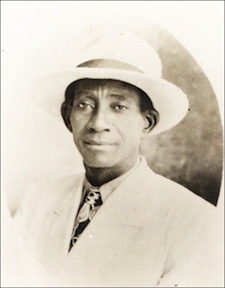
Maya Deren was a Ukrainian-born American experimental filmmaker and important promoter of the avant-garde in the 1940s and 1950s. Deren was also a choreographer, dancer, film theorist, poet, lecturer, writer, and photographer.

The culture of Haiti is an eclectic mix of African, Taino and European elements due to the French colonization of Saint Domingue and its large and diverse enslaved African population, as is evidenced in the Haitian language, music, and religion.
{{Infobox artist | name = Loïs Mailou Jones | image = Lois Jones, artist and teacher - NARA - 559227.jpg | caption = Loïs Mailou Jones c. 1936 | birth_name = | birth_date = November 3, 1905 | birth_place = Boston, Massachusetts | death_date = June 9, 1998 (aged 92) | death_place = Washington,

A manbo is a priestess in the Haitian Vodou religion. Haitian Vodou's conceptions of priesthood stem from the religious traditions of enslaved people from Dahomey, in what is today Benin. For instance, the term manbo derives from the Fon word nanbo. Like their West African counterparts, Haitian manbos are female leaders in Vodou temples who perform healing work and guide others during complex rituals. This form of female leadership is prevalent in urban centers such as Port-au-Prince. Typically, there is no hierarchy among manbos and oungans. These priestesses and priests serve as the heads of autonomous religious groups and exert their authority over the devotees or spiritual servants in their hounfo (temples).
Jacques-Enguerrand Gourgue was one of Haiti's most renowned painters of the 20th century.

Etel Adnan was a Lebanese-American poet, essayist, and visual artist. In 2003, Adnan was named "arguably the most celebrated and accomplished Arab American author writing today" by the academic journal MELUS: Multi-Ethnic Literature of the United States.

Edouard Duval-Carrié is a Haitian-born American contemporary painter and sculptor based in Miami, Florida.

Hector Hyppolite (1894–1948) was a Haitian painter. Considered as the "Grand Maître of Haitian Art" Hyppolite was born in Saint-Marc, Hyppolite was a third generation Vodou priest, or houngan. He also made shoes and painted houses before taking up fine art painting, which he did untrained. Hyppolite spent five years outside of Haiti from 1915-1920. His travels abroad included trips to New York and Cuba. Although he later claimed those years had been spent in Africa, such as Dahomey and Ethiopia, scholars regard that as more likely an instance of promotional myth-making than factual.
Haitian art is a complex tradition, reflecting African roots with strong Indigenous, American and European aesthetic and religious influences. It is an important representation of Haitian culture and history.
Karen McCarthy Brown was an anthropologist specializing in the anthropology of religion. She is best known for her groundbreaking book Mama Lola: A Vodou Priestess in Brooklyn, which made great strides in destigmatizing Haitian Vodou. Until her retirement in 2009 due to illness, McCarthy Brown was a Professor of Anthropology at Drew University. At Drew University, McCarthy Brown was the first woman in the Theological School to receive tenure and to achieve the rank of full professor.

Haitian Vodou art is art related to the Haitian Vodou religion. This religion has its roots in West African traditional religions brought to Haiti by slaves, but has assimilated elements from Europe and the Americas and continues to evolve. The most distinctive Vodou art form is the drapo Vodou, an embroidered flag often decorated with sequins or beads, but the term covers a wide range of visual art forms including paintings, embroidered clothing, clay or wooden figures, musical instruments and assemblages. Since the 1950s there has been growing demand for Vodou art by tourists and collectors.
Pierrot Barra (1942–1999) was a Haitian Vodou artist and priest, who was president of a Bizango society. He was well-known for his use of diverse materials to create “Vodou Things,” which functioned as charms or altars for the Vodou religion.
Barbara Prézeau-Stephenson is a Haitian artist and art historian.

Andrée Malebranche was an Afro-Haitian painter and art instructor. She has works included in the collections of the Musée d'Art Haïtien and was recognized by the Haitian government for her contributions to the development of Haitian painting.
Joseph Wilfrid Daleus, sometimes called Joseph Daleus, or Wilfrid Daleus, was a Haitian painter born in Port-au-Prince, Haiti.
Theard Aladin was a Haitian self-taught artist, noted for his artwork depicting Haitian life and use of bright colors in paintings.
During the Haitian Revolution (1791–1804), Haitian women of all social positions participated in the revolt that successfully ousted French colonial power from the island. In spite of their various important roles in the Haitian Revolution, women revolutionaries have rarely been included within historical and literary narratives of the slave revolts. However, in recent years extensive academic research has been dedicated to their part in the revolution.
Romaine-la-Prophétesse, born Romaine Rivière around 1750 in Santo Domingo, was a free black coffee plantation owner and leader of an uprising early in the Haitian Revolution.
Luce Turnier was a Haitian painter and collage artist. One of Haiti's leading artists, Turnier achieved international renown for her fusion of Haitian culture and modernist style.
Rachel Beauvoir-Dominique was a Haitian anthropologist and Vodou mambo.








